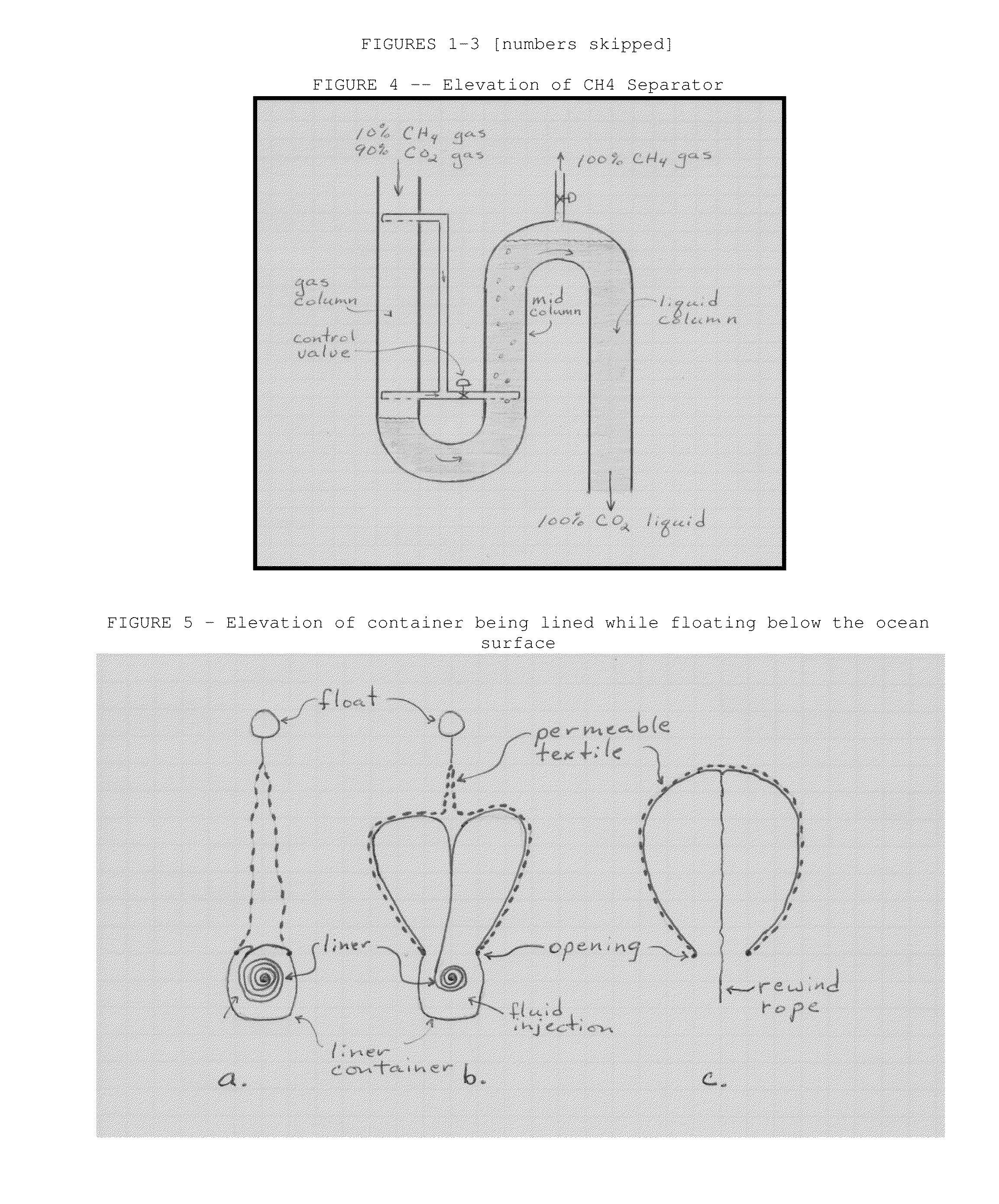Systems and methods for off-shore energy production and CO2 sequestration
a technology of energy production and co2 sequestration, applied in separation processes, lighting and heating apparatus, borehole/well accessories, etc., can solve the problems of difficult management, difficult to evenly distribute the tremendous volume of quick-lime (or other alkalinity source) evenly, and make fossil fuels less economically competitive with renewable energy
- Summary
- Abstract
- Description
- Claims
- Application Information
AI Technical Summary
Benefits of technology
Problems solved by technology
Method used
Image
Examples
example 1
[0871]Arranging the geosynthetics in layers of different materials. FIG. 64 is an example of the multi-layered construction of a green roof system. Note that the different layers have different functions, some to support the soil for the plants, others to prevent water leakage, while still others provide bottom protection. Artificial geologic CO2 storage systems can have this same “layers of materials with differing properties and purposes.” Layering options include: leak-proof membranes, drainage and leak detection structures between dual leak-proof membranes, insulation structures, bio-repellant or bio-attracting netting, structural fabrics, filters, etc.
[0872]The basic materials provide strength with impervious coatings such as the fabrics and tubes manufactured by layfieldgeosynthetics.com, fabinno.com, gseworld.com, maccaferri-usa.com, prestogeo.com, typargeotextiles.com and others.
[0873]For additional protection, clay sandwich materials consisting of a thin layer of bentonite ...
example 2
[0875]If necessary, biocides and bio-attractants could be embedded, attached to, or dissolved in the materials. The biocide properties may be prevented from leaching into the seawater or the liquid CO2 by non-reactive layers bonded to the biocide layer. Manufacturers of biocide geotextiles include typargeotextiles.com. Note that in the deep ocean situation, tiny salt particles or tiny “bubbles” of fresh water may be adequate biocides, as the life forms at these depths should experience discomfort when encountering higher or lower salt concentrations.
[0876]Particularly with the silicate and pH raising materials described for mineral-efficient artificial geologic formations, bio-attractants could encourage shellfish to colonize the artificial geologic layers with deep sea corals.
[0877]It may be the last place you'd expect to find corals [8], up to 6,000 m (20,000 ft) below the ocean's surface, where the water is icy cold and the light dim or absent. Yet believe it or not, lush coral g...
example 3
[0880]By embedding particles in the materials, they can be made in a range of densities. For example, the bottom sheet to protect the CO2 containers from rocks could be less dense than the ooze, so it could “float” on ooze, but be denser than seawater or liquid CO2 so it would remain flat as the CO2 containers are put in place. The top protective sheet could be less dense than liquid CO2 but be denser than seawater so it would remain in place. Note that the deep ocean pressure will increase the density of the materials, relative to their density at the ocean surface. This might be used to good effect by arranging a material with bubbles that collapse with depth. If the gas in the bubbles is predominantly CO2, the resulting liquid CO2 may be an adequate biocide when encountered by sea creatures attempting to bore through the material.
PUM
| Property | Measurement | Unit |
|---|---|---|
| Force | aaaaa | aaaaa |
| Flexibility | aaaaa | aaaaa |
| Energy | aaaaa | aaaaa |
Abstract
Description
Claims
Application Information
 Login to View More
Login to View More - R&D
- Intellectual Property
- Life Sciences
- Materials
- Tech Scout
- Unparalleled Data Quality
- Higher Quality Content
- 60% Fewer Hallucinations
Browse by: Latest US Patents, China's latest patents, Technical Efficacy Thesaurus, Application Domain, Technology Topic, Popular Technical Reports.
© 2025 PatSnap. All rights reserved.Legal|Privacy policy|Modern Slavery Act Transparency Statement|Sitemap|About US| Contact US: help@patsnap.com



